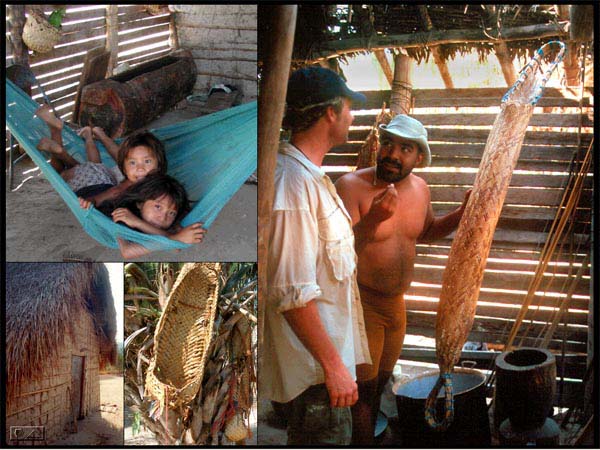

We came across a traditional settlement with only children and parrots. As it was a weekend, the adults were all out in the fields cultivating manioc and other food plants, as well as tobacco for sale in Manapiare and Puerto Ayacucho.
Left top - children playing in their hammock / bed.
Lower left - Traditional housing made of mud and bamboo.
Second from lower left - A traditional woven backpack - goods and clothing for travel are placed in the bowl shaped container, and then laced in as if it were a giant shoe.
On the right - Luis is explaining to Marco the process of processing the roots of manioc (also called cassava) from a poisonous pulp containing cyanide to a staple food source. Root pulp is put in the top until the tube is loosely full. Then, water is poured into the top and allowed to run throughout the pulp. The top loop is then hung on a special hook for this purpose, and the bottom loop holds one end of a log off the ground. To squeeze the water (with the poison) out of the pulp they stand on the log, which squeezes the pulp in the same way a "chinese finger trap" squeezes tight on children's fingers when they pull their hand apart. Then the pressure is released and more water is added to repeat the process until enough of the poison has been removed to be edible. For more details (and photos) of this process, visit this processing manioc site.